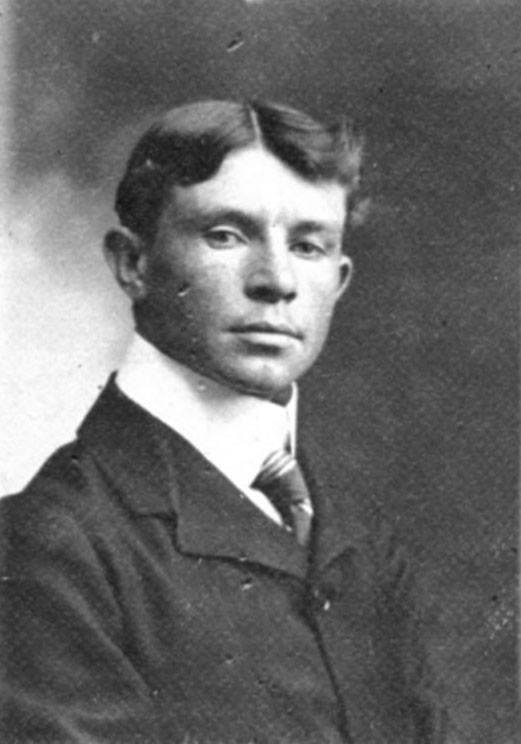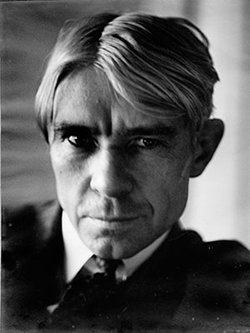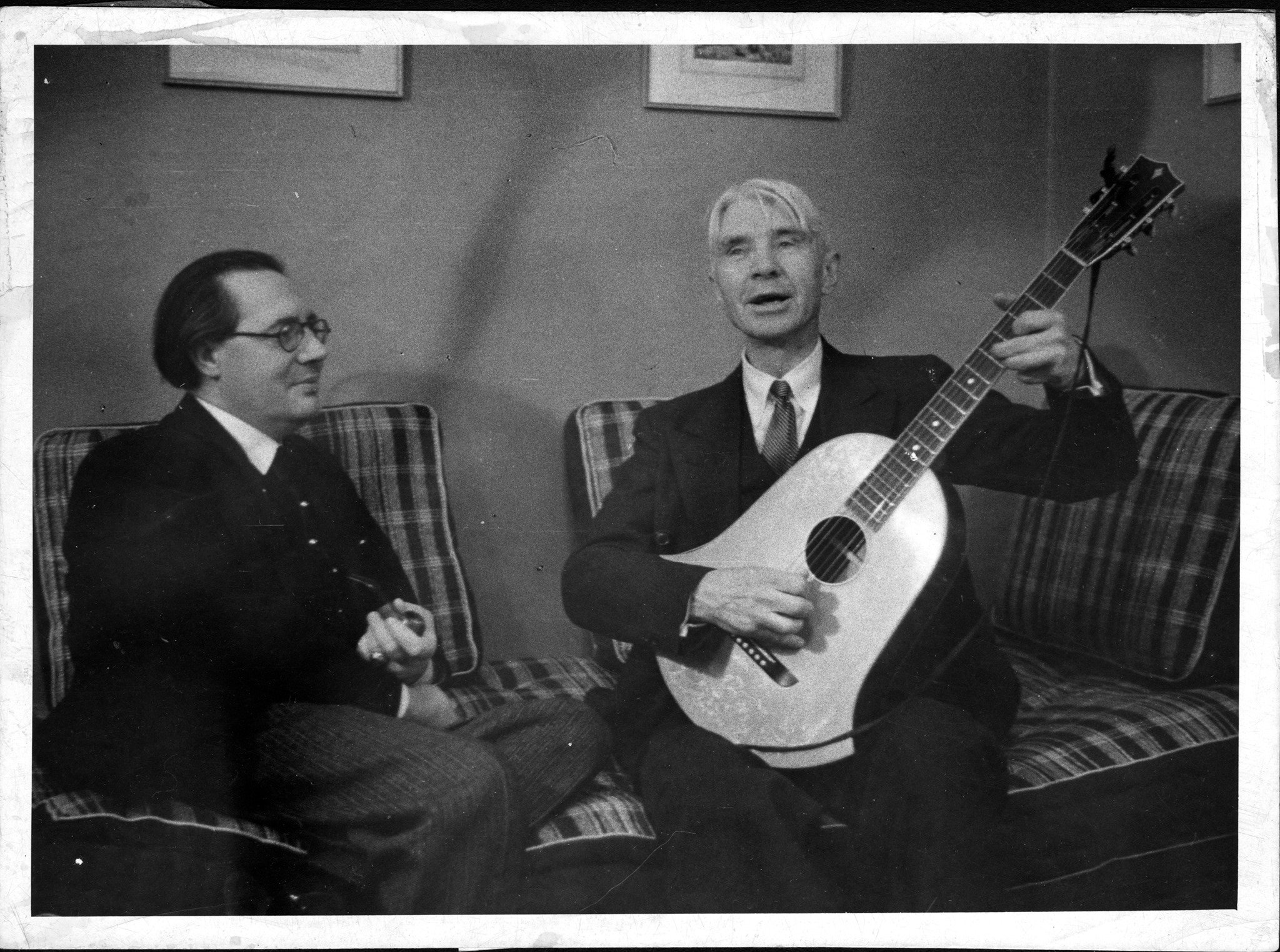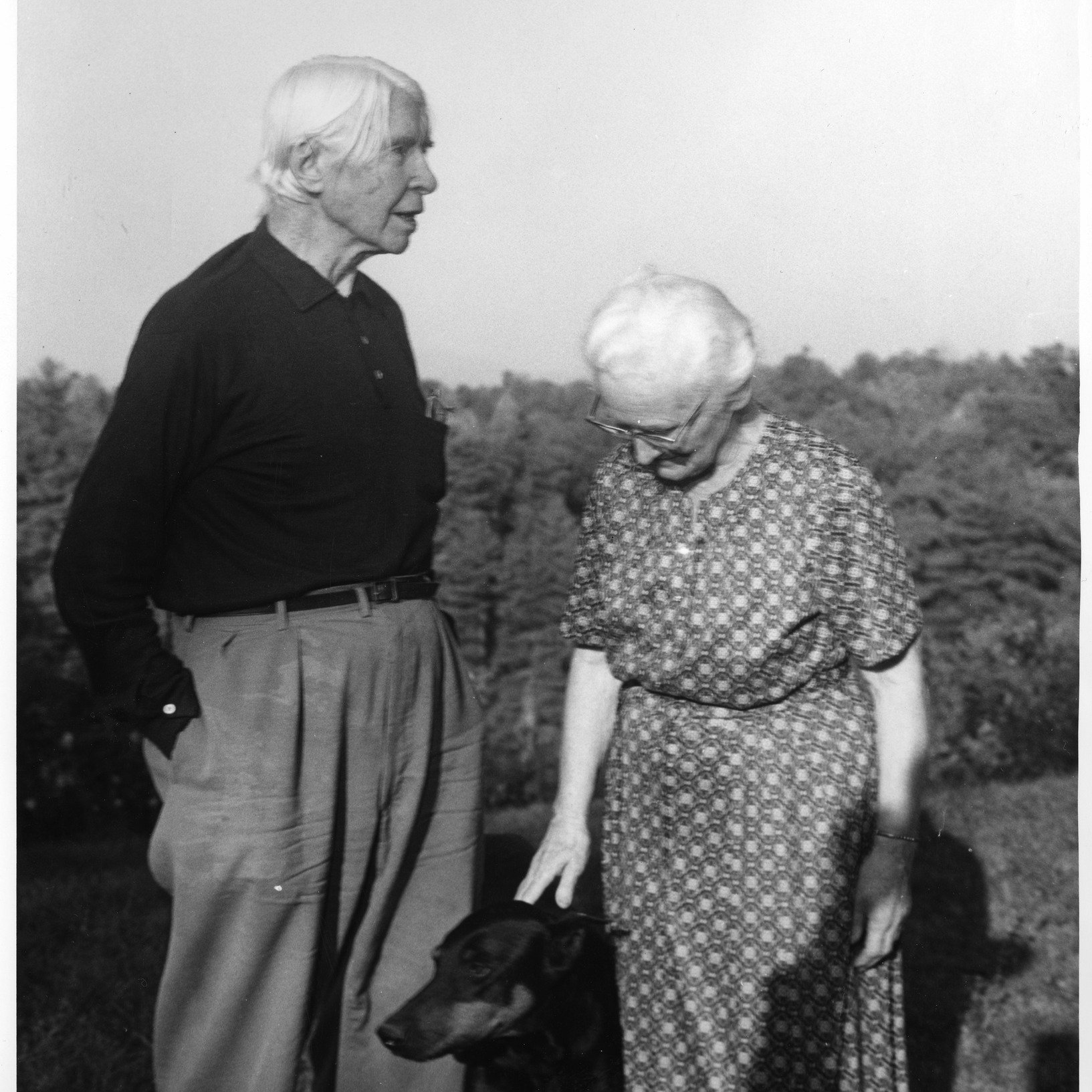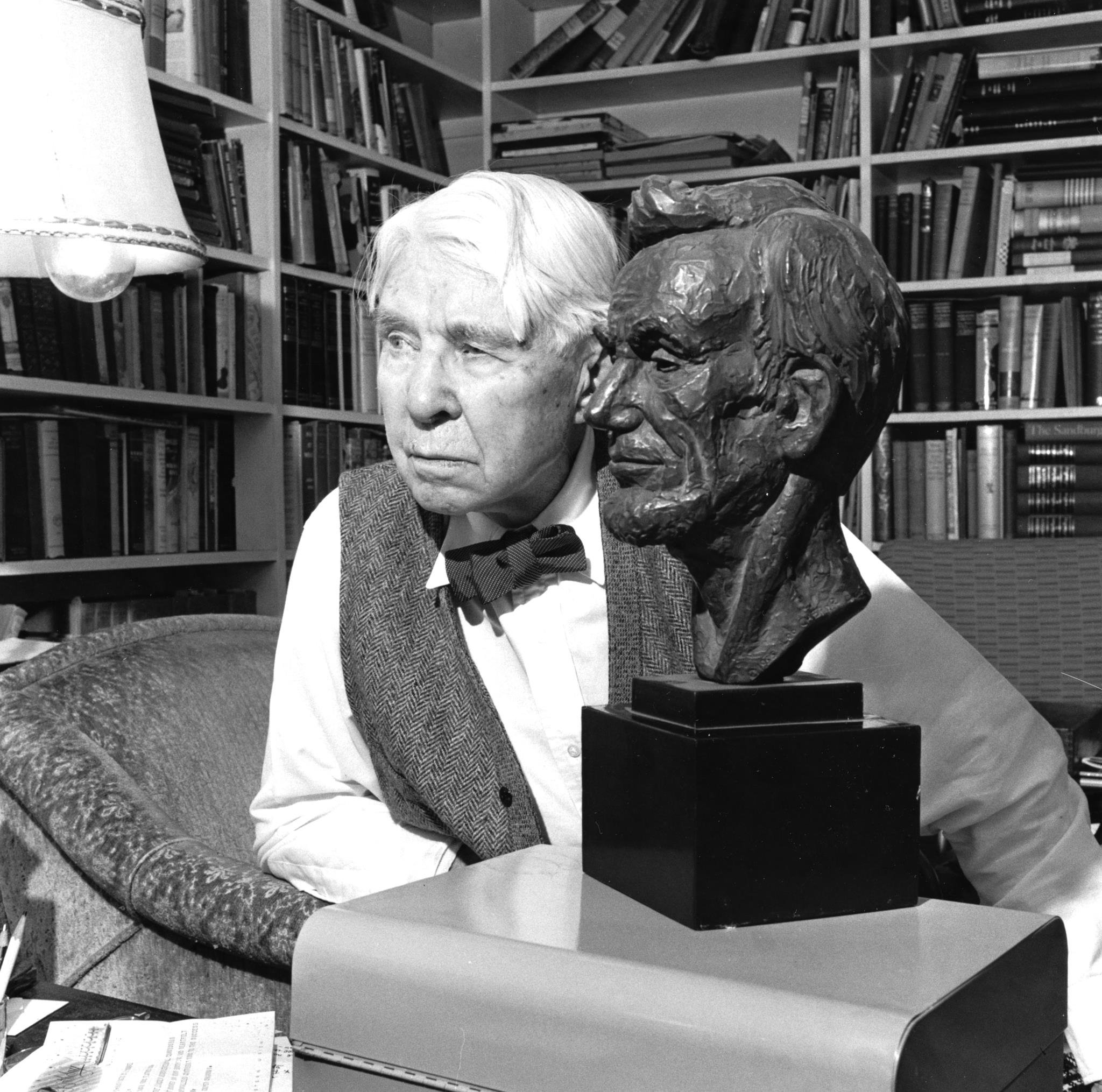Rediscovering Carl
/Young Carl Sandburg at a typewriter, possibly at the Chicago Daily News. Used with permission of the Rare Book and Manuscript Library, University of Illinois, Urbana-Champaign
When John Quinley moved to Henderson County in 2006, it was a reunion of sorts. John grew up in Maywood, Illinois just a few blocks from where a young reporter named Carl Sandburg had lived for five years. Half a century later, John found himself once again living close to a Sandburg home. Destiny, one might argue, was calling the life-long educator to revive and retell the story of Carl Sandburg.
Whether or not it was destiny, John Quinley has indeed reconnected with the famous poet and author. After several years of intensive study and research, John’s book, Discovering Carl Sandburg: The Eclectic Life of an American Icon, was published this summer.
—-
Like so many of his generation, John was introduced to Sandburg’s iconic poems “Chicago” and “Fog” as a high school student during the 1950s. That, however, was the extent of his Sandburg knowledge. Nearly sixty years later, he took a class of college students to visit the Carl Sandburg Home Historic Site. In preparation for the visit, he read a biographical essay written by Sandburg’s granddaughter.
His interest in Sandburg piqued, John became a volunteer at the Sandburg Home. He read the docent guide prepared by the park rangers and devoured most of the thirty books Sandburg had written, as well as approximately three dozen books and articles that others wrote about him.
With time, John’s thirty-minute tours at the Sandburg Home evolved into longer presentations at other venues, an article on the Sandburg Home website, articles for Inklings and Idlings (the newsletter for the Carl Sandburg Historic Site Association in Galesburg, Illinois), and eventually the decision to write his own book about Sandburg.
And there was a lot to write about.
Sandburg was known as “A workingman’s poet.”
During the first half of the twentieth century, Carl Sandburg seemed to be everywhere and do everything: poet and political activist; investigative reporter, columnist, and film critic; lecturer, folk singer, and musicologist; Lincoln biographer and historian; children’s author; novelist; and media celebrity. He was one of the most successful American writers of the twentieth century. Everyone knew his name. But as time went on, his fame began to fade, and by the twenty-first century, the public knew little, if anything, about his legacy.
Sandburg was in his mid-sixties when the family moved to Flat Rock in 1945. It was love at first sight when Carl and Paula Sandburg first saw the Connemara farm. Its 245 acres provided ample room and spring pasture for their expanding goat herd as well as beautiful woods with challenging trails up to scenic overlooks. During his final 22 years in Flat Rock, he published fully one-third of his books. He was eighty-five years old when his last collection of poems, Honey and Salt, was released. “The brightest, most lasting happiness I know,” explained Sandburg, “is that which comes from yearning, striving, struggling, fashioning, this way and that, till a thing is done.”
—-
A motivating force for John was the desire to reacquaint people with the breadth and depth of Carl Sandburg’s skills, interests, and accomplishments. “The thing that hit me right away was how eclectic Sandburg was,” says John. “I had known just about his poems.” John also appreciated Sandburg’s personal philosophy which reveals a deep caring about social justice. Sandburg was also very humorous and a great storyteller. “That surprises people,” says John.
John’s research helps us appreciate Sandburg for the full spectrum of his abilities - as he explained during an interview for this article:
“Sandburg was driven and worked tirelessly. His father worked 12 hours a day six days a week and Carl worked just as hard. You have to work long hours to write as much as he did.
He was only the second private person ever invited to address a Joint Session of Congress when he was asked to speak to the assembled chambers about Lincoln in 1959. At the time, Sandburg was the foremost Lincoln scholar and wanted to write about Lincoln the real person, not just the mythology.
Beyond his poetry and Lincoln biography, people are surprised to find out that Sandburg wrote about 2000 film reviews and that he knew just about every silent film star. Charlie Chaplin was a lifelong friend. He knew all the movie stars and celebrities. Ernest Hemingway. Marilyn Monroe and Carl were good friends. He knew all the writers, journalists, and folk singers. Pete Seeger was a good friend. He hung around with politicians like Roosevelt and Truman, Kennedy and Johnson. He sang folk songs for Roosevelt at the White House.
It’s just amazing that one guy was so connected to so many different kinds of prominent people. He traveled around the country like a rock star.”
Leading tours at the Sandburg home made John realize that visitors to the Sandburg Home typically know very little about the Sandburg legacy and that they are uniformly amazed to learn about the scope of his life and works. When visitors asked what they could read to learn more, the choices were limited. Although there are two autobiographies, ten biographies, three memoirs, and nine books written about specific aspects of the Sandburg legacy, very little of it is still readily available today.
John decided to fill that void and the result was his book, Discovering Carl Sandburg: The Eclectic life of an American Icon which was published in September 2022.
John describes his book:
“The book fills the gap for a new generation of readers. It is organized into thirteen chapters that discuss areas of Sandburg’s achievements or touch upon aspects of his personal life, such as his wife’s world-famous goats.
Each chapter provides historical context, anecdotes, quotations from poetry and prose, and quotations from authors who wrote about Sandburg. Readers will come to appreciate Sandburg’s work ethic, wide-ranging interests, pioneering accomplishments, advocacy for social justice, chronicles of American history, love of family, wisdom, integrity, kindness, and humor.”
In his eulogy at the Lincoln Memorial in Washington, D.C., President Lyndon Johnson spoke of Sandburg’s impact on our society:
Carl Sandburg needs no epitaph. It is written for all time in the fields, the cities, the face and heart of the land he loved and the people he celebrated and inspired. With the world, we mourn his passing. It is our pride and fortune as Americans that we will always hear Carl Sandburg’s voice within ourselves; for he gave us the truest and most enduring vision of our own greatness.
With John Quinley’s help, Carl Sandburg’s story is being retold - allowing his prophetic and prodigious voice to reverberate across a new generation of readers curious to learn about one of 20th Century America’s most iconic citizens.
——
Discovering Carl Sandburg: The Eclectic Life of an American Icon is available on Amazon.com and locally at the Wrinkled Egg, the Henderson County Heritage Museum, the Joy of Books, and soon in the Carl Sandburg Home Historic Site bookstore.
John Quinley
John Quinley is a retired college administrator and faculty member who teaches American history at AB Technical Community College in Asheville. He was raised in Maywood, Illinois—just a few blocks from where Sandburg lived 30 years earlier. He currently resides with his wife, Melissa, in Hendersonville—just a few miles from Sandburg’s historic Flat Rock home.








